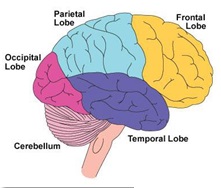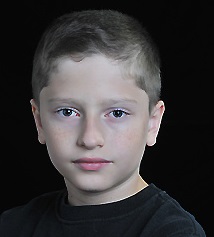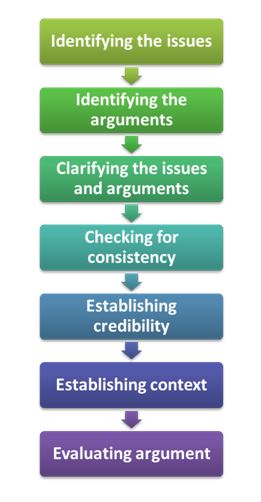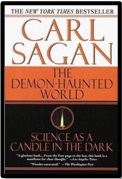|
TRANSLATE THIS ARTICLE
Integral World: Exploring Theories of Everything
An independent forum for a critical discussion of the integral philosophy of Ken Wilber
 David Christopher Lane, Ph.D.
Professor of Philosophy, Mt. San Antonio College Lecturer in Religious Studies, California State University, Long Beach Author of Exposing Cults: When the Skeptical Mind Confronts the Mystical (New York and London: Garland Publishers, 1994) and The Radhasoami Tradition: A Critical History of Guru Succession (New York and London: Garland Publishers, 1992). David Christopher Lane, Ph.D.
Professor of Philosophy, Mt. San Antonio College Lecturer in Religious Studies, California State University, Long Beach Author of Exposing Cults: When the Skeptical Mind Confronts the Mystical (New York and London: Garland Publishers, 1994) and The Radhasoami Tradition: A Critical History of Guru Succession (New York and London: Garland Publishers, 1992).SEE MORE ESSAYS WRITTEN BY DAVID LANE ChannelingThe Skepticism of Carl SaganDavid Lane
The last time I ever saw my fraternal uncle Bill was in the early 1980s when we got into a very heated argument at my mother's house over the famous scientist and author, Carl Sagan. He was a great fan of Sagan's enormously popular television show Cosmos, whereas I thought it was a bit too pedantic and clunky. Apparently he had one too many beers because our topical disagreement elevated into a top of the lungs shouting match, which only ended when he chucked a beer can at my head and yelled, “Do you think you are smarter than Dr. Sagan,” to which I said, “No, but I think he is wrong about many things, including his silly amniotic immersion theory concerning Near- Death Experiences.” Bill stormed out of my mom's house that night and we never spoke again even though he lived for another decade plus. Needless to say, I have always felt a deep sadness and a bit of remorse over what transpired, even though in hindsight it was a minor fight gone postal due to his alcohol consumption. Ironically, several years after this incident, I became an ardent Carl Sagan fan, primarily due to my extensive reading of his numerous books and my increasingly skeptical attitude towards all things paranormal. I was particularly impressed with Sagan's later books, such as The Demon Haunted World, where Sagan displayed a seasoned skepticism coupled with a disarming openness to evidence which would disprove his own pet ideas or theories. For example, even though Sagan's theory concerning Near-Death Experiences was almost laughably reductionist (seeing visions of holy personages in a tunnel of light are actually just vague birth memories of one's obstetrician) and ultimately turned out to be incorrect, he at least postulated a hypothesis that could be tested and potentially refuted. Far too often theories are postulated by vested thinkers that are in the immortal words of the famous theorist and contemporary of Einstein, Niels Bohr, “not even wrong” because they cannot be possibly tested or falsified. One of the lasting legacies of Carl Sagan's work has been a critical thinking primer he aptly titled, “Baloney Detection Kit.” There have been several variations derived from it, but his original essay states it clearly this way: “What skeptical thinking boils down to is the means to construct, and to understand, a reasoned argument and—especially important—to recognize a fallacious or fraudulent argument. The question is not whether we like the conclusion that emerges out of a train of reasoning, but whether the conclusion that emerges out of a train follows from the premise of starting oint and whether that premise is true. Among the tools:
Recently on a Yahoo Group Forum I host I posted the following concerning consciousness and neuroscience: 
“That is the question: Can we feel beyond the brain or is that the brain giving us a feeling of beyond?” To which another member responded, “Do you really think there should be a question? Now that we are in 2011 the question should only arise if there is a reason to question—some evidence to create the question. I thought it was a good point he/she made. I added the following points to the discussion: “While I think it appears fairly obvious that awareness is generated by our brain and our body interacting with our environment (all empirically accessible, at least to some measure), the idea that our consciousness is generated by something else is certainly one that has a long tradition. What evidence do we have that something 'extra' or non-physical is needed or required?” However, another discussant provided a pregnant rejoinder, “How about an eighteen month old baby visiting an air museum with its parents and being able to assimilate enough information and impressions necessary to eighteen months later, at the age of only three, concoct a story about
Whatever people think about reincarnation, there are some interesting details to explain here. Most obviously how an 18-month-old child is capable of remembering and THEN repeating 18 months later ANYTHING at all from such a trip to a museum. I would have been flabbergasted if any of my children could have done that. I can still remember the first time my eldest child related a memory to me. He was about the same age (18 months) and it was something that had happened the same day. Being able to take in the information alleged in this story and then relate it in a 'concocted story' I believe would be well beyond the abilities of any such infant: 'drop tanks, 'Iwo Jima,' 'Natoma,' 'jack Larsson' Yet that is the bog-standard (and IMHO 'lame') refutation of this example.” Additionally this same writer excerpted a pertinent quote from Carl Sagan himself where he opined about studying reincarnation reports from children more fully. This got me to thinking about how Carl Sagan might respond to the now famous story of “The Past Life Memories of James Leininger.”
ABC News documentary (2004) about James Leininger
I decided to use Carl Sagan's baloney detection kit to see how he might have dealt with the Leininger account if he were still alive today.
Of course, Carl Sagan has been dead for many years and since he was hyper skeptical of channeling as a means of communicating with the dead (and since I have no proficiency in such a practice anyway), I decided to use his baloney detection kit to see how he might have dealt with the Leininger account if he were still alive today. The most important issue that confronts us, however, is to discover how the story was originally told. This is the first and perhaps greatest difficulty that confronts any objective analysis of the young boy's remembrances. Simply put, we do not have a record of James Leininger's experiences unfiltered from day one.  James Leininger Rather we have a number of retellings as provided by both his father and mother and later by Carol Bowman, a past life therapist, who was consulted by Leininger's family to help with James' recurring nightmares. Thus, the phenomenon under study has been irrevocably tainted from the very start. Given that the young boy visited an air museum before he started having nightmares and recalling unusual past events gives one deep pause. In light of Occam's Razor, the sequence of events suggests that something much more mundane is operating. In addition, the therapist that worked with James Leininger and who encouraged the young boy to be more forthcoming about his memories was herself deeply invested in reincarnation narratives (as Sagan reminds us, “Try not to get overly attached to a hypothesis: just because it's yours.”). Hence, any deeper analysis of James' recounting has to be taken with several grains of skeptical salt, since there are too many interfering and potentially biasing points along the narrative timeline (from his father to his therapist) to arrive at a “pure” or “objective” recounting. As such, then, we are left with a series of anecdotes that, even if suggestive, cannot in themselves be taken for more than what they are. Here is how one skeptical website [Skeptico] explains what might have happened[1]: “It starts when this child's parents take him to a WWII air museum. Now, the article says this was the “Kavanaugh Flight Museum in Dallas”, but I presume it meant to say the Cavanaugh Flight Museum in Dallas. And at this place they have on display a WWII Corsair (the plane James will later say he flew)... This young boy, not unusually, is excited by the planes, and remembers the name of the distinctive Corsair he saw with the unusual gull-wing, plus many other details, including things his mother didn't remember, such as these drop fuel tanks that are also displayed at the museum. Naturally, this small boy was fascinated by warplanes and he remembered obscure details about them that his mother didn't. Of course, he enjoyed showing off this knowledge to her, later. However, although he was excited by the planes, the images of WWII battles also frightened him, and they soon began to give him nightmares about being trapped in a plane on fire. This is when the real problem starts. The child's grandmother, for no obvious rational reason I can think of, suggests he is remembering a past life. She brings in Carol Bowman (an author of several books on reincarnation), to “affirm” James' nightmares. (Bowman is said to have been influenced by Ian Stevenson � another reincarnation proponent who is known to ask leading questions of young children.) Bowman “encourages” James in his fantasies, also with leading questions. Unsurprisingly, the child cooperates in this fantasy building. After all, they're telling him he was a real pilot. The father then starts to research the story, obtaining and reading books on WWII fighter planes. While reading one of these books with his father, the child points to a picture of the distinctive Corsair he remembers from the museum and says, "that was my plane." At some point the child starts drawing pictures of planes, signing them 'James 3' (his name is James). During this time the parents buy him plane toys and read him plane books. From the TV program we know they bought him a toy plane big enough for him to sit in, and every shot showed him in pilot's goggles or by a plane. Carol Bowman asked him leading questions and encouraged his fantasy at every turn. Being a young child, he loved making up fantasies of being a pilot, to go with the toys he had been given. But they were just stories. Admittedly there appear to be a couple of inexplicable hits. First, the child said he flew off a boat. When asked the name of the boat he says "Natoma", and when asked the name of someone on the boat, he says 'Jack Larson'. While flipping through another book on WWII, James points at Iwo Jima and says that's where he got shot down. The father discovers there was a boat called the Natoma Bay, and finds there was only one Corsair pilot from this ship who was shot down at Iwo Jima, and his name was James M. Huston Jr. (So now they have an explanation of the 'James 3' he keeps writing on his pictures, since '3rd' would come after 'Jr.'.) Also, John Larson turns out to be a real person who knew James M. Huston Jr. But do these few apparent hits really need explaining? First, James is not an unusual name. Little James wrote his name on his pictures as most children would, but the '3' could mean anything (and we have no way of knowing if it was written before or after his father found out about James M. Huston Jr.). As pointed out by Tim in the comments below, James had just had his third birthday, so it is hardly surprising that he started to sign his pictures 'James 3'; at least, we now have a prosaic explanation for 'James 3'. And as another person commented, James the third should be written 'James III' not 'James 3'. In summary: 'James 3' means nothing. 'Natoma' is the name of a ship he could no doubt have seen in one of his father's books. But 'Natoma' is not quite 'Natoma Bay' - and did he say 'Natoma' or just something similar? We'll never know. Only 'John Larson' can't be explained easily. But even with this we really don't know: Considering how his mother has apparently 'forgotten' about the museum visit that started the whole thing off, I am disinclined to take either of James' parents' word for it that the child remembered' these items exactly as claimed. This is hardly extraordinary evidence for such an extraordinary claim. Paul Kurtz chairman of the Center for Inquiry and CSICOP, was briefly featured on the program saying he thinks the parents are self-deceived: 'They're fascinated by the mysterious and they built up a fairy tale'. Yes, that sounds quite possible.” Interestingly, this young boy also apparently gets some of his hits wrong, such as when he claimed that James Huston was shot down in a Corsair when another researcher claims that he was actually shot down in a FM2 Wildcat. As the Skeptico site ironically queries, “Which is the more prosaic explanation:
I suggest that people insisting in option 1 above are unnecessarily choosing the less parsimonious explanation.” 
Now has the James Leininger been fully debunked? No. But are there enough reasonable doubts and questions that make the story less than convincing? Yes. Carl Sagan suggested that being skeptical doesn't mean one has to be cynical or closed-minded. But it does indicate that extraordinary claims must be properly measured and weighted by the evidence proffered in such cases. Perhaps what David Hume so wisely cautioned about accepting miracles can be applied with equal force to paranormal claims, "That no testimony is sufficient to establish a miracle, unless the testimony be of such a kind, that its falsehood would be more miraculous than the fact which it endeavors to establish." Yet, the larger issue that the poster wanted to raise in light of my exchange with the original respondent was this: “Aren't these cases that allow us to still 'question' . . . whether we 'can we feel beyond the brain or is that the brain giving us a feeling of beyond?'” My sense is that what prompts one to still question or not is dependent on the individual and that such openness or doubtfulness varies. I do think skepticism of Leininger skeptics is healthy and warranted, even if I personally don't find the case compelling or convincing. REFERENCES[1] "Reincarnation All Over Again", http://skeptico.blogs.com/, July 07, 2005
|


